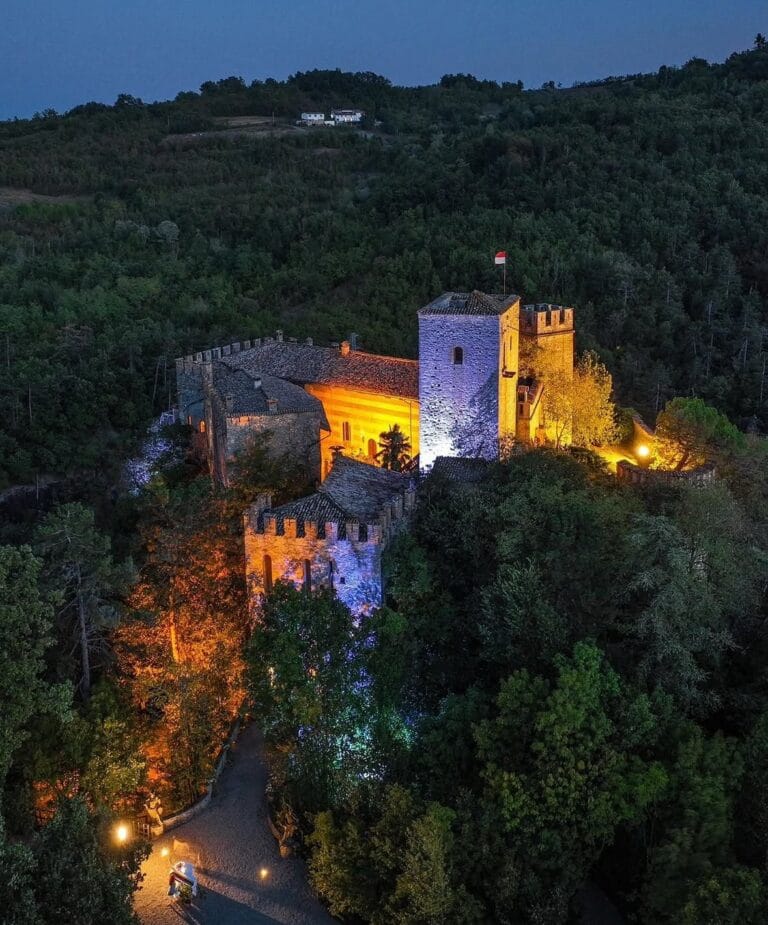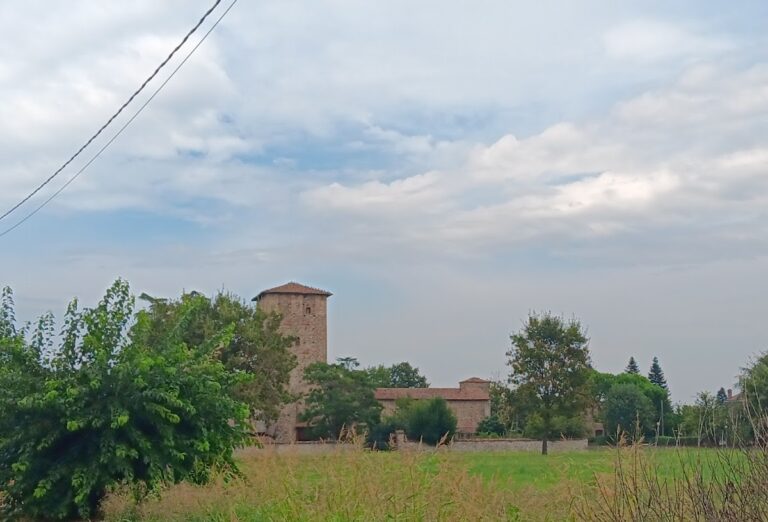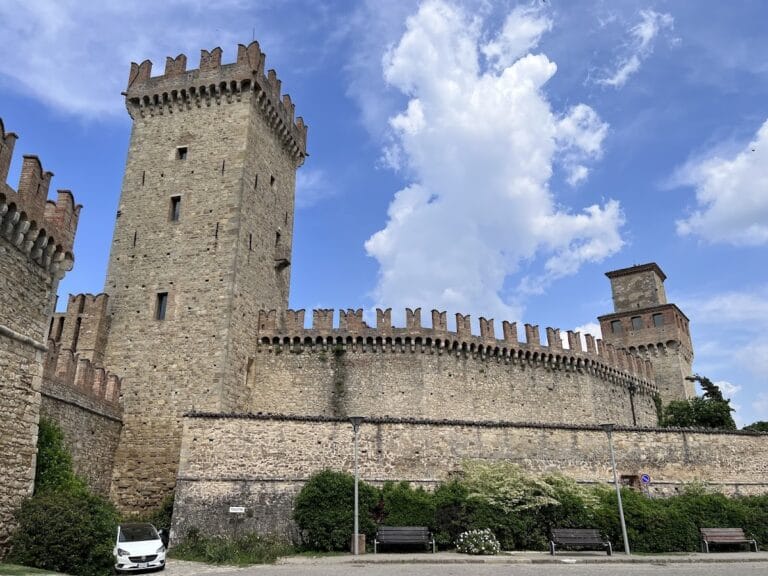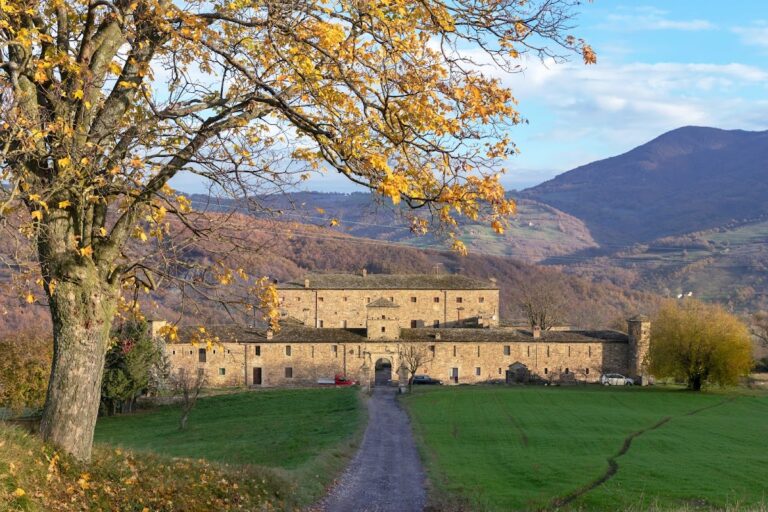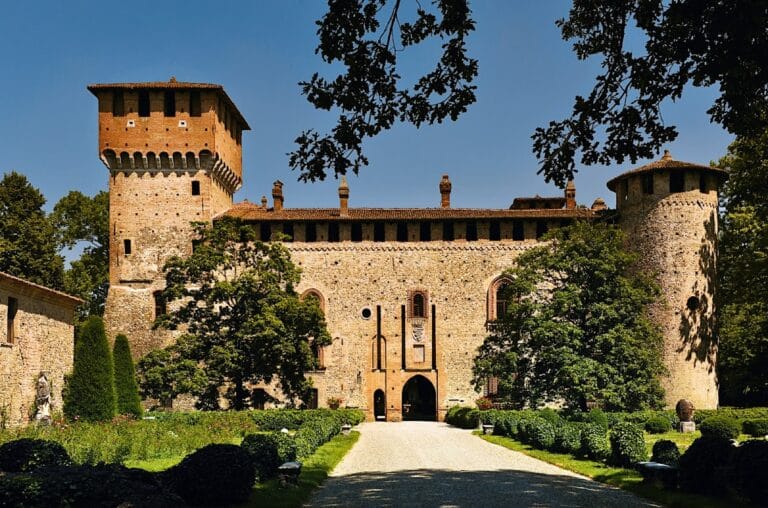Veleia: An Ancient Roman Municipium in Northern Italy
Table of Contents
Visitor Information
Google Rating: 4.3
Popularity: Very Low
Google Maps: View on Google Maps
Official Website: cultura.gov.it
Country: Italy
Civilization: Roman
Remains: Burial, City, Civic, Domestic, Economic, Entertainment, Infrastructure, Religious, Sanitation
Context
Veleia is situated in the Emilia-Romagna region of northern Italy, near the contemporary town of Lugagnano Val d’Arda within the province of Piacenza. The archaeological site occupies a natural plateau that overlooks the Val d’Arda valley, providing a strategic vantage point over the surrounding terrain. Its location near the confluence of minor waterways and proximity to the ancient Roman road known as the Via Emilia facilitated access and communication within the region during antiquity.
Archaeological investigations have established that Veleia’s earliest occupation dates to the Iron Age, with significant urban development occurring under Roman dominion from the late Republic through the early Imperial period. Functioning as a municipium, the site was integrated into the Roman provincial system of Cisalpine Gaul. Material evidence indicates a decline in settlement activity after the 3rd century CE, with abandonment likely linked to regional socio-political and environmental changes, although no definitive cause is recorded in the archaeological record.
Excavations initiated in the 18th century and intensified in the 20th century have uncovered extensive urban remains, including inscriptions and architectural complexes. Preservation varies across the site; some sectors remain well-protected beneath sediment layers, while others have been affected by agricultural practices. Current conservation efforts prioritize stabilizing exposed ruins and supporting ongoing archaeological research to elucidate the site’s historical development.
History
Veleia’s historical trajectory exemplifies the transformation of northern Italy from the late Iron Age through late antiquity. Initially an indigenous settlement, it was incorporated into the Roman world following Rome’s expansion into Cisalpine Gaul. Under Roman administration, Veleia attained municipium status and flourished particularly during the early Imperial era. Its decline and eventual desertion in late antiquity correspond with broader regional instability and environmental disruptions that affected many communities in the Po Valley. Archaeological and epigraphic sources situate Veleia within the administrative and social frameworks of Roman northern Italy, while natural disasters likely precipitated its abandonment.
Iron Age and Pre-Roman Period
Prior to Roman conquest, the area of Veleia was occupied during the Iron Age, as evidenced by archaeological remains such as burial sites and material culture. The settlement’s position on a defensible plateau overlooking the Val d’Arda valley afforded control over local waterways and routes. This early occupation reflects the presence of Ligurian and other indigenous groups in the region. However, the absence of contemporary written records or inscriptions limits detailed understanding of the site’s political or social role before Roman incorporation, leaving its pre-Roman significance primarily inferred from archaeological data.
Roman Conquest and Republican Era (2nd century BCE)
The Roman conquest of northern Italy culminated in the mid-2nd century BCE with the subjugation of the Ligurian peoples. Veleia was established as a Roman settlement circa 158 BCE, following Rome’s consolidation of the region. Strategically located behind the Roman colony of Piacenza, near the valley of the river Chero, Veleia was integrated into the Roman territorial organization of Cisalpine Gaul. It likely received municipium status, granting local self-government under Roman law and facilitating the assimilation of indigenous populations. While no direct evidence records military engagements at Veleia, its foundation reflects Rome’s broader strategy to secure and administrate northern Italy through urbanization and colonization.
Imperial Roman Period (1st century BCE – 3rd century CE)
The Augustan era marked a phase of considerable urban expansion and prosperity for Veleia. The town was constructed on a series of terraces, demonstrating sophisticated urban planning adapted to the natural topography. Excavations reveal a well-defined civic center comprising a paved forum with a rectangular basilica, surrounding arcades, and tabernae (shops), indicating a structured public and commercial space. A spa complex situated in the southeastern sector of the forum attests to investment in public amenities.
Epigraphic evidence from this period includes inscriptions honoring local magistrates such as Lucius Lucilius Priscus and dedications to Emperor Augustus, reflecting the presence of local elites and the imperial cult. An elliptical masonry structure adjacent to the forum has been variously interpreted as a small amphitheater or a water cistern, illustrating multifunctional urban architecture. The discovery of the Tabula Alimentaria Traianea, a large bronze inscription detailing Emperor Trajan’s social welfare program, underscores Veleia’s integration into imperial economic and social policies. As a municipium within the provincial framework of Cisalpine Gaul, Veleia maintained a degree of municipal autonomy while participating in the broader administrative system of the Roman Empire.
Late Antiquity and Decline (4th–5th centuries CE)
During the 4th and 5th centuries CE, Veleia experienced a significant decline in population and urban vitality, mirroring wider regional trends amid the late Roman Empire’s political and economic challenges. Archaeological data indicate reduced maintenance of public buildings and a decrease in epigraphic activity, suggesting a contraction of civic institutions and social organization. The settlement likely became more ruralized, with inhabitants focusing on subsistence agriculture and local production.
Environmental factors appear to have played a critical role in the site’s abandonment. Evidence points to natural disasters such as a sudden collapse of a mountain cliff or recurrent landslides that damaged the settlement’s infrastructure. These events, combined with the political instability following the fall of the Western Roman Empire and the pressures of barbarian incursions in northern Italy, contributed to depopulation and the cessation of urban life at Veleia. No direct records document military conflicts at the site during this period.
Modern Rediscovery and Archaeological Research (17th century – present)
Veleia was rediscovered in the 17th century, notably following the unearthing of the Tabula Alimentaria Traianea, which renewed scholarly interest in the site. Systematic archaeological excavations commenced in the 18th century and intensified throughout the 20th century, revealing extensive Roman urban remains and inscriptions. Key figures in the excavation history include Giorgio Monaco, who directed investigations from 1937 to 1957 and established an early antiquarium in 1953, and Mirella Marini Calvani, who inaugurated the current Antiquarium di Veleia in 1975.
The Antiquarium, housed in a 19th-century building originally serving as the excavation directorate’s office, preserves and exhibits artifacts such as casts of the Tabula Alimentaria Traianea and the Lex Rubria de Gallia Cisalpina. Its displays are organized thematically, covering pre-Roman burials, cult practices, Roman public and private life, and funerary customs. Since 2014, the site and museum have been managed by the Italian Ministry of Cultural Heritage, with ongoing conservation efforts aimed at stabilizing ruins and facilitating research to further elucidate Veleia’s historical significance within the Roman world.
Daily Life and Importance by Period
Roman Conquest and Republican Era (2nd century BCE)
Following its establishment as a Roman municipium around 158 BCE, Veleia’s population likely comprised a mixture of Roman settlers and indigenous Ligurian-descended inhabitants. Epigraphic evidence attests to the presence of local magistrates, such as duumviri, indicating the implementation of Roman municipal governance and social hierarchy. Economic activities centered on agriculture, with cultivation of cereals, olives, and vines adapted to the fertile Po Valley environment. Artisanal crafts and trade were facilitated by the site’s proximity to the Via Emilia and local waterways.
Residential architecture from this period is not extensively documented, but domestic spaces probably included modest courtyards and storage facilities. Clothing styles conformed to Roman Republican norms, including tunics and cloaks. Religious practices began to incorporate Roman deities alongside local cults, although no specific temples or shrines from this era have been identified. The municipium status embedded Veleia within the Roman administrative and social framework, fostering cultural integration and local autonomy.
Imperial Roman Period (1st century BCE – 3rd century CE)
During the Augustan and subsequent Imperial periods, Veleia’s urban expansion reflected its prosperity as a municipium. The population included Roman citizens, local elites, freedmen, artisans, and laborers. Inscriptions name individuals such as Lucius Lucilius Priscus, who likely held municipal office, illustrating social stratification and elite patronage. Economic life diversified to encompass commercial trade, artisanal production, and public services.
The town’s terraced layout featured a paved forum with a basilica, arcades, and tabernae, serving as a marketplace for goods including wine, olive oil, pottery, and textiles. The spa complex within the forum area indicates investment in public leisure facilities. The elliptical structure near the forum, possibly an amphitheater or water cistern, exemplifies multifunctional urban infrastructure. Dietary evidence and regional parallels suggest consumption of bread, olives, fish, and locally produced wine. Clothing ranged from standard Roman tunics and cloaks to finer fabrics among wealthier citizens. Domestic interiors featured mosaic floors and painted walls, with household layouts incorporating kitchens, storage rooms, and courtyards.
Religious life included the imperial cult and traditional Roman deities, with public inscriptions honoring Augustus and local patrons. The Tabula Alimentaria Traianea, a bronze inscription detailing Trajan’s social welfare program, highlights Veleia’s participation in imperial economic policies and regional social networks. Civic administration was conducted by elected magistrates and councils, maintaining municipal autonomy within the empire.
Late Antiquity and Decline (4th–5th centuries CE)
By the 4th century, Veleia’s population and urban functions had diminished significantly. Archaeological evidence indicates reduced upkeep of public buildings and fewer inscriptions, reflecting a contraction of civic life and social organization. The community likely adopted a more rural lifestyle, focusing on subsistence agriculture and pastoralism, with diminished trade and artisanal activity. Dietary patterns probably became less varied, emphasizing staple crops and local resources. Clothing and domestic decoration simplified in accordance with declining wealth and urban amenities.
Religious practices evolved amid the Christianization of northern Italy, though direct evidence at Veleia is limited. Nearby sites attest to Christian communities and ecclesiastical structures, suggesting that Veleia’s inhabitants may have participated in emerging Christian rites. The site’s abandonment in the 5th century is attributed to natural disasters such as landslides and cliff collapses, compounded by political turmoil following the Western Roman Empire’s fall. Municipal functions ceased, and the municipium dissolved, ending Veleia’s role as a regional center.
Modern Rediscovery and Archaeological Research (17th century – present)
Although not a period of occupation, the modern rediscovery of Veleia has been instrumental in reconstructing its ancient daily life and significance. The 17th-century discovery of the Tabula Alimentaria Traianea initiated scholarly interest, leading to systematic excavations that revealed the town’s urban layout, inscriptions, and material culture. The Antiquarium di Veleia, established in 1975, preserves and interprets artifacts through thematic displays on pre-Roman burials, Roman public and private life, and funerary customs. These collections provide insight into the cultural diversity, economic practices, and religious beliefs of Veleia’s inhabitants across periods.
Ongoing conservation and research continue to clarify the site’s historical trajectory, emphasizing its role as a municipium that reflected broader trends in Roman northern Italy, from integration and prosperity to decline and abandonment.
Remains
Architectural Features
Veleia’s urban fabric is characterized by its construction on a series of terraces that adapt to the natural slope of the plateau overlooking the Val d’Arda valley. The city’s layout centers on a forum complex surrounded by commercial and civic buildings. Primary construction materials include local stone and Roman concrete (opus caementicium), with ashlar masonry employed in prominent structures. The extant remains predominantly represent civic and public architecture, with limited evidence of large-scale residential or military buildings. The main building phases correspond to the late Republican and early Imperial periods, particularly the Augustan age, with occupation declining by the 4th and 5th centuries CE. Some sectors remain buried beneath sediment, preserving architectural elements, while others have suffered damage from agricultural activity and natural erosion.
Key Buildings and Structures
Forum
The forum, constructed primarily in the late 1st century BCE and expanded during the Augustan period, served as the civic nucleus of Veleia. It comprises a paved rectangular square encircled by arcades that likely functioned as covered walkways and commercial spaces. Within the forum stands a rectangular basilica, dating to the same period, which served administrative and judicial functions. Although internal divisions are fragmentary, the basilica’s central nave is discernible. Surrounding the forum are tabernae—small rooms or shops—indicating active commercial use adjacent to the public square. Noteworthy epigraphic elements include a long floor inscription honoring Lucius Lucilius Priscus and a pink limestone dedication to Emperor Augustus embedded in the paving, both integral to the forum’s fabric and preserved in situ.
Spa Complex (South-East of the Forum)
Located southeast of the forum, the spa complex dates to the 1st century CE, coinciding with Veleia’s principal urban development phase. It is the first major building encountered within the archaeological area. The complex comprises multiple rooms arranged to accommodate bathing functions, although specific features such as hypocaust heating systems or distinct bath chambers (caldarium, tepidarium) are not fully preserved. The masonry and spatial organization reflect typical Roman public bath architecture adapted to the site’s topography. The remains are partially buried but sufficiently intact to delineate the complex’s plan and its spatial relationship to the forum.
Elliptical Structure (Amphitheater or Cistern)
Adjacent to the forum lies an elliptical masonry structure dating to the 1st or 2nd century CE, whose original function remains debated. Some scholars interpret it as a small amphitheater, while others propose it served as a water cistern. The structure features curved walls forming an elliptical perimeter, but lacks definitive evidence of seating tiers or water-retaining installations to conclusively determine its use. Its footprint and construction techniques align with multifunctional urban architecture of the period. Due to fragmentary preservation, its precise role within the city’s infrastructure remains uncertain.
Other Remains
Additional architectural fragments and surface traces are documented around the forum and spa complex, including terraces and retaining walls that supported the city’s multi-level layout. These elements date mainly from the late Republican through early Imperial periods. No substantial military fortifications or large residential villas have been identified, though smaller domestic structures may exist beneath sediment layers. Scattered architectural components such as column bases, capitals, and decorative stone fragments have been recovered, some of which are exhibited in the nearby Antiquarium.
Archaeological Discoveries
Excavations at Veleia have yielded a diverse assemblage of artifacts spanning from the Iron Age through late antiquity. Pottery includes locally produced tableware and imported amphorae, reflecting trade connections within the Roman world. Numerous inscriptions have been recovered, most notably the Tabula Alimentaria Traianea, a large bronze inscription detailing Emperor Trajan’s social welfare program, and the Lex Rubria de Gallia Cisalpina, both critical for understanding Roman provincial administration. Floor inscriptions within the forum honor local elites such as Lucius Lucilius Priscus and imperial figures like Augustus.
Coin finds range from the Augustan period through the 3rd century CE, providing chronological markers for occupation phases. Tools and domestic objects, including lamps and cooking vessels, have been found primarily in residential and workshop contexts, though these areas remain less extensively excavated. Religious artifacts include statuettes and altars, notably a statue identified as the so-called Ligurian Jupiter, discovered in the cult area. These items illustrate the religious practices maintained at Veleia during Roman times.
Preservation and Current Status
The preservation of Veleia’s ruins varies across the site. The forum and spa complex retain substantial architectural elements, including paved surfaces, walls, and inscriptions visible in situ. The elliptical structure survives as partial masonry remains without a complete superstructure. Some terraces and retaining walls are well-preserved due to burial under sediment, which has protected them from erosion and agricultural damage. Other areas have suffered from plowing and natural degradation, resulting in fragmentary remains.
Restoration efforts have focused on stabilizing exposed ruins rather than reconstructing them. The Antiquarium di Veleia, established in 1975 and renovated in 2010, houses casts and original fragments, aiding in the preservation of epigraphic and sculptural materials. The site is managed by the Italian Ministry of Cultural Heritage, with ongoing conservation projects aimed at preventing further deterioration and facilitating archaeological research. Vegetation growth and erosion remain challenges in some sectors, requiring continuous monitoring.
Unexcavated Areas
Several portions of the ancient city remain unexcavated or only partially investigated, including peripheral terraces and potential residential quarters beyond the forum and spa complex. Surface surveys and geophysical studies suggest the presence of buried architectural features, but modern land use and conservation policies limit extensive excavation. No large-scale military or industrial districts have been identified through surface evidence. Future research aims to clarify the extent of urban development beyond the currently excavated core.





